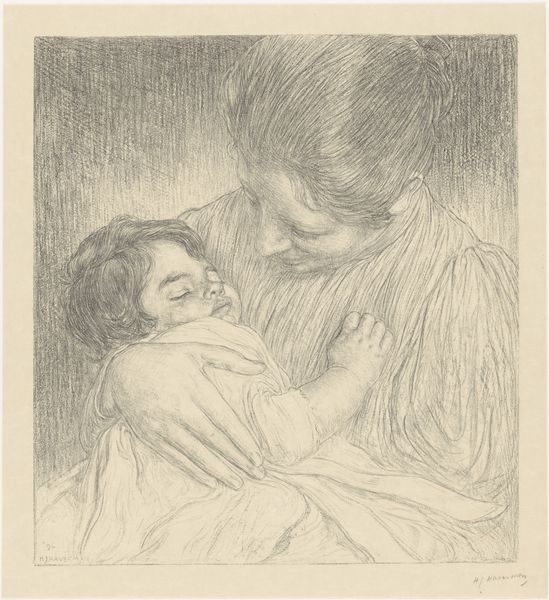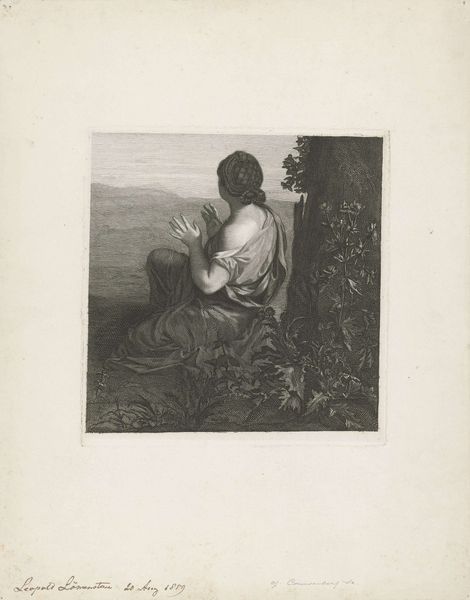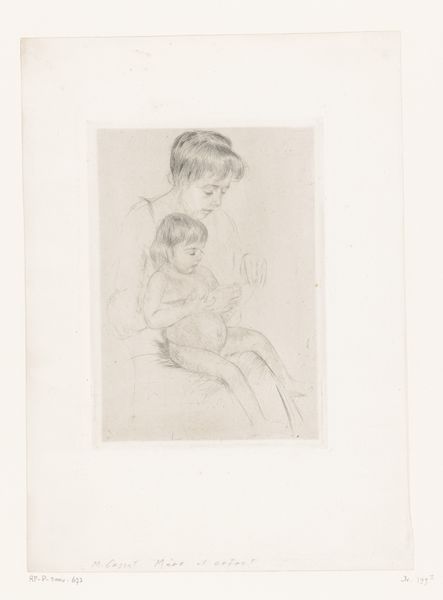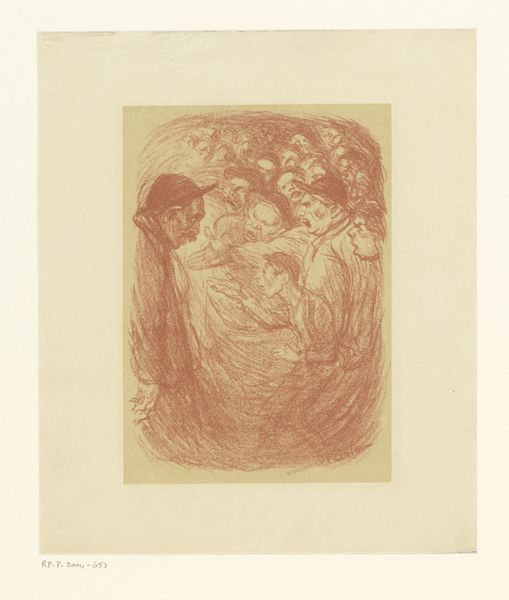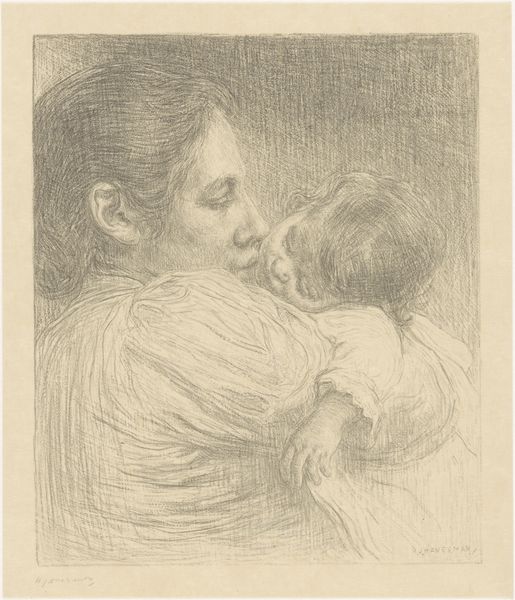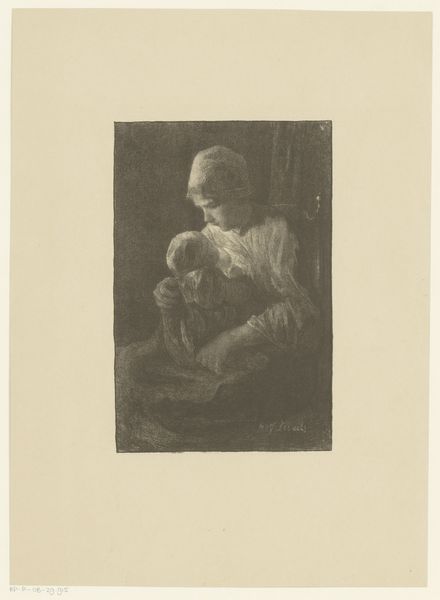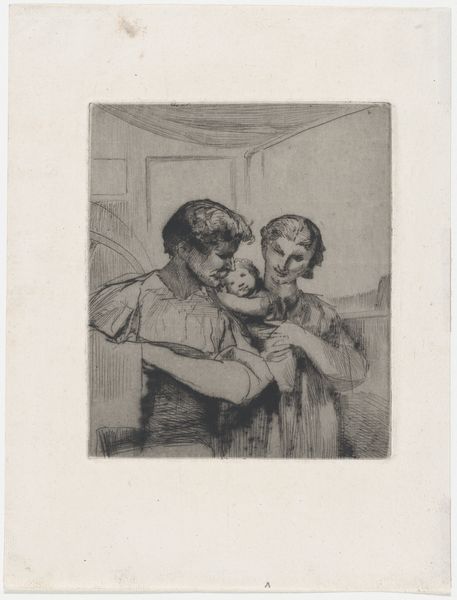
drawing
#
portrait
#
drawing
#
mother
#
landscape
#
figuration
#
intimism
Dimensions: height 183 mm, width 165 mm
Copyright: Rijks Museum: Open Domain
Martin Hönemann made this print, Mutter und Kind, using etching, a process rooted in craft traditions. The image begins with a metal plate, likely copper or zinc, coated with a waxy, acid-resistant layer. The artist would have then drawn through this layer, exposing the metal beneath. Immersing the plate in acid then bites away at the exposed lines, creating grooves. The depth of these grooves determines the darkness of the lines in the final print. To create the image, the plate is inked, the surface wiped clean, and then pressed onto paper. The paper absorbs the ink from the etched lines. The soft, delicate lines achieved through etching lend themselves well to the intimate depiction of the mother and child, evoking a sense of tenderness. Although seemingly simple, etching is a labor-intensive process, requiring both technical skill and artistic vision. This is a fine art print, but it exists because of a painstaking craft process.
Comments
No comments
Be the first to comment and join the conversation on the ultimate creative platform.
